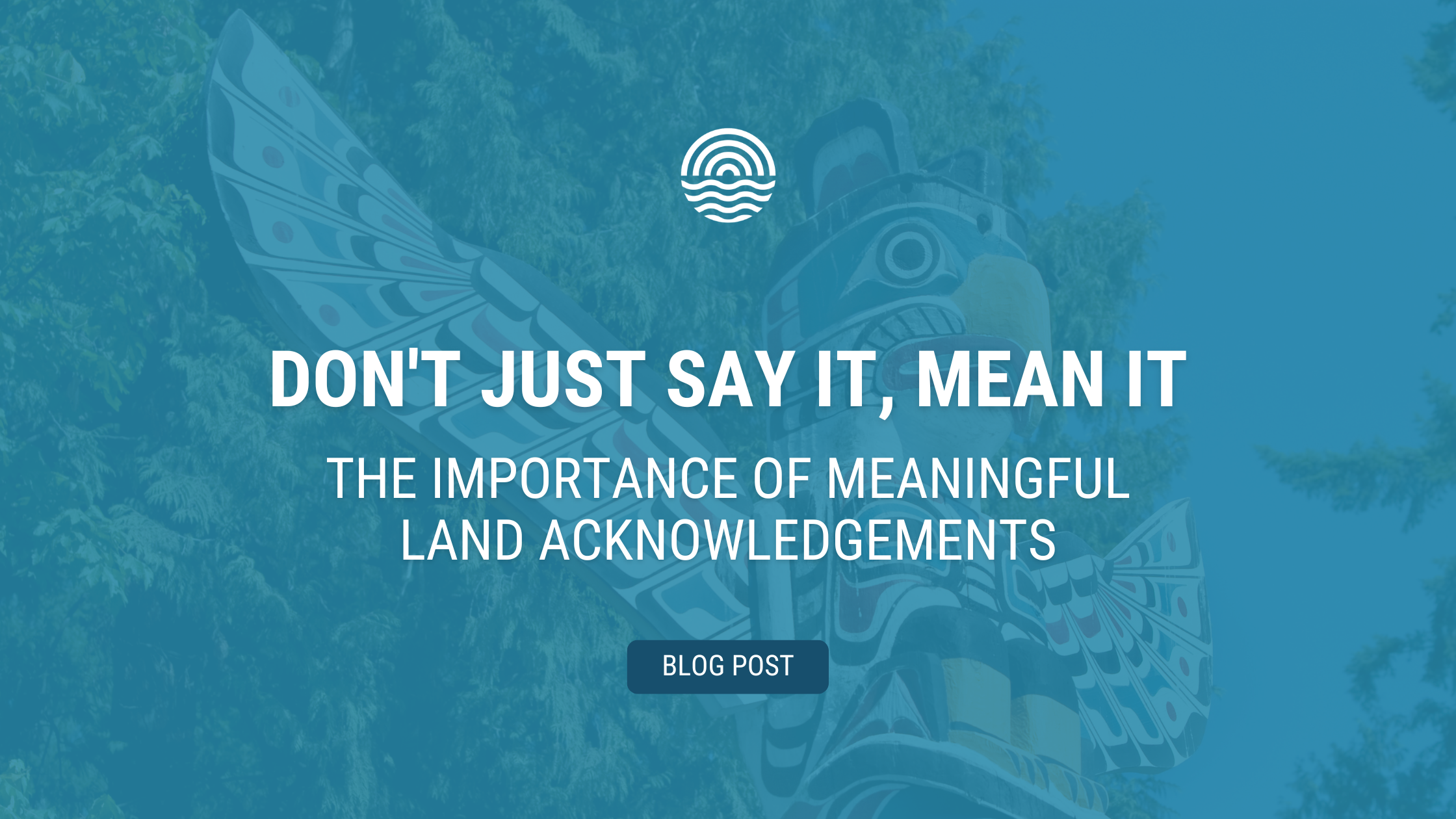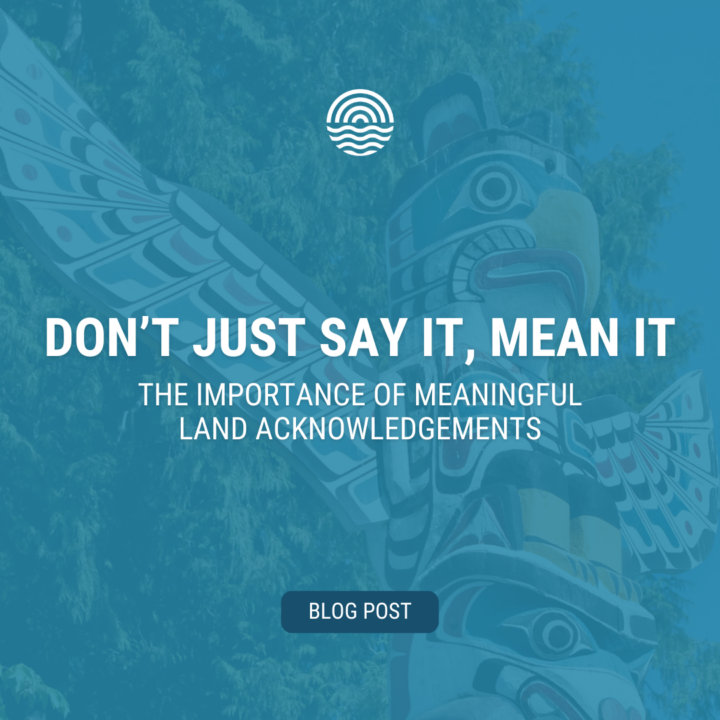
BLOG POST
Don’t Just Say It, Mean It: The Importance of Meaningful Land Acknowledgements
You may have heard or read a land acknowledgement at the beginning of a public event, gathering, or even on a company’s website.
But have you stopped to consider what it truly means?
What are Land Acknowledgements?
Land acknowledgements (also referred to as territory acknowledgements) are a powerful tool for recognizing the enduring relationships that First Nations, Inuit, and Métis Peoples have with specific land areas.
They’re an expression of gratitude for the Indigenous people who have stewarded this land for millennia and continue to be vital parts of our communities today.
Why Do Land Acknowledgements Matter?
These statements play a crucial role in:
- Bringing awareness to the often-overlooked history of Indigenous Peoples on this land.
- Respecting sovereignty by acknowledging the ongoing presence and inherent rights of Indigenous communities.
- Sparking dialogue, as land acknowledgements can be a facilitator for deeper conversations about colonization and its lasting effects.
Key Considerations to Keep Top of Mind
While territory acknowledgements are a positive step towards reconciliation, it’s important to be mindful of a few things:
- Land acknowledgements hold greater weight when followed by concrete actions towards reconciliation.
- Rushing through a territory acknowledgement diminishes its significance. Take the time to deliver it thoughtfully and respectfully.
- Including land acknowledgements everywhere (e.g., including them in every email signature) can also diminish their significance. Be mindful of when and where you include a land acknowledgement to ensure they remain impactful and meaningful.
- For events or gatherings on Indigenous land, consider consulting with local Indigenous communities when crafting the land acknowledgement. This shows respect and ensures the acknowledgement is accurate and meaningful.
- Be open to learning. Territory acknowledgements are a starting point for ongoing education and action. Be open to learning more about the history and ongoing experiences of Indigenous communities.
- Focus on building authentic relationships with Indigenous communities, and look for ways to support Indigenous-led grassroots initiatives and movements.
- Take the time to research and learn about the Indigenous communities who traditionally lived on the land where you work or reside. Resources like this website provide interactive maps to help you discover this information.
While this is not an exhaustive list, it is a starting point for continued learning. Keep in mind that it’s important to do your own research and homework, too!
Final Thoughts
Land acknowledgements are a powerful tool for raising awareness and fostering a more inclusive world for everyone, especially Indigenous Peoples. Understanding their significance and taking action based on the knowledge they spark helps us move forward in a spirit of reconciliation and respect.
Further Reading Materials
- “Land Acknowledgement” by Lynn Gehl
- “A Guide to Indigenous Land Acknowledgement” by the Native Governance Center
- “Territory Acknowledgement” by Native Land Digital
- “Land Acknowledgements” by the X̱wi7x̱wa Library at the University of British Columbia
Questions about driving meaningful DEI change in your business? We can help!


